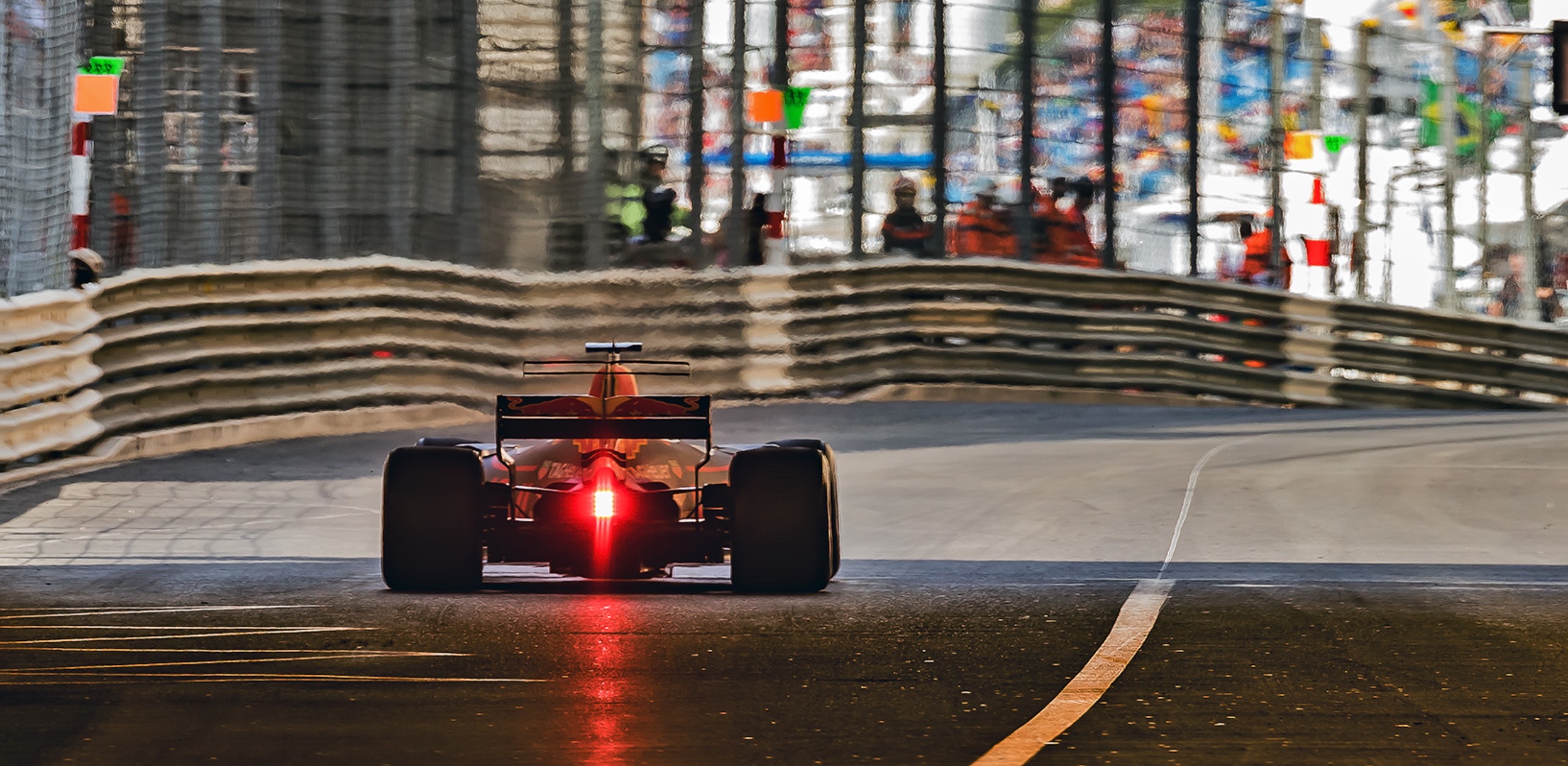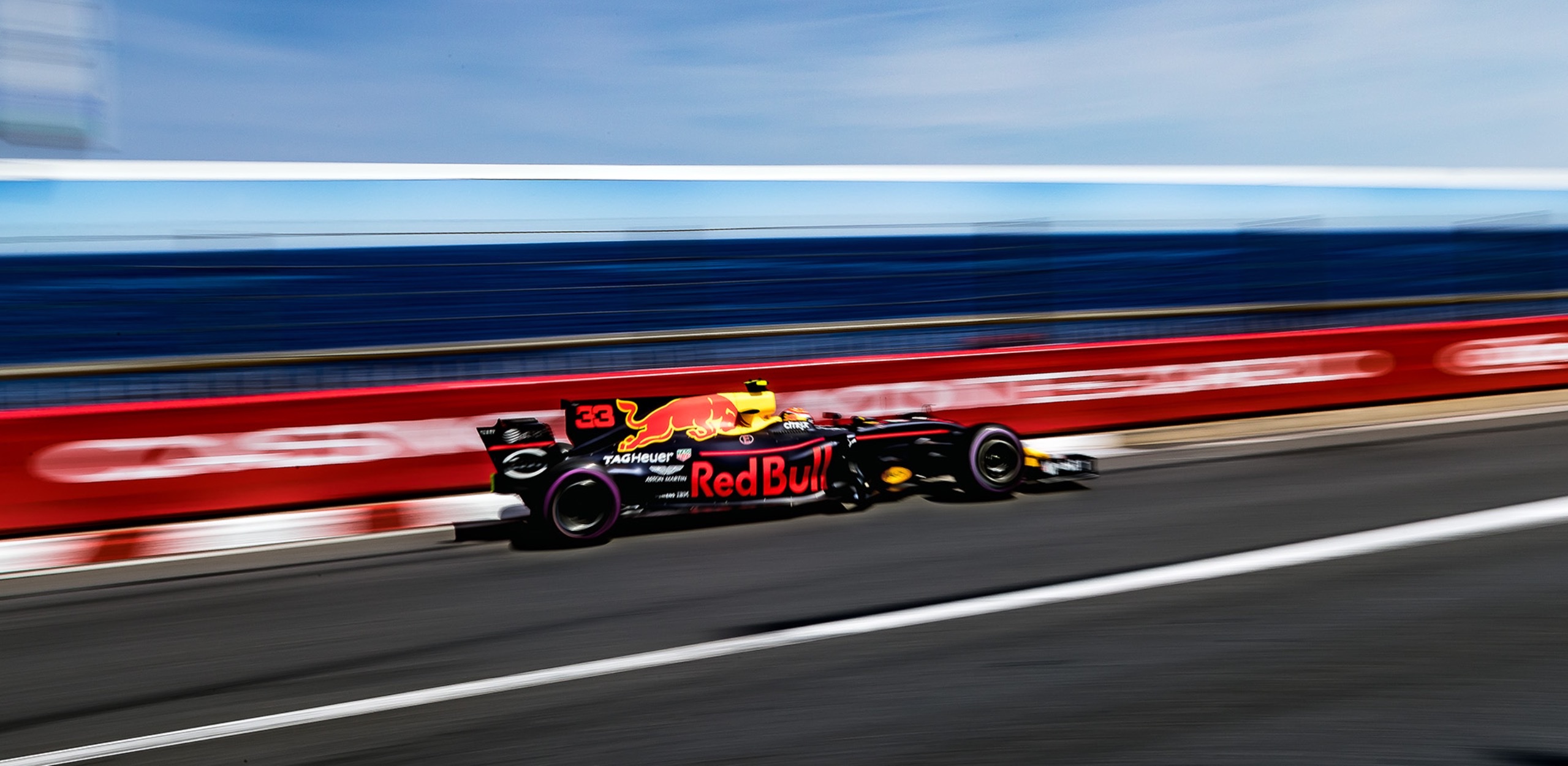
Ferrari’s strategists gambled that if Sebastian Vettel could dig deep and increase his pace leading up to a later tire stop, he could take the lead from teammate Raikkonen. Their insight apparently paid off as Vettel went on to take not only his third win of the F1 season but also the Scuderia’s first Monaco victory since 2001.
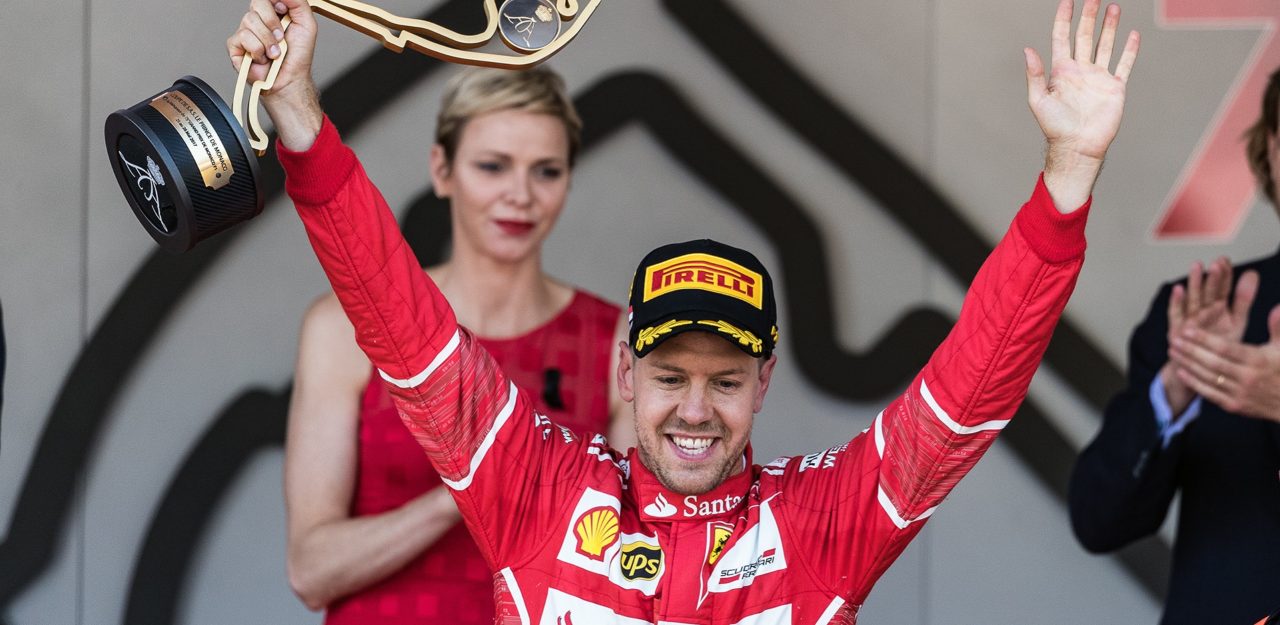
Raikkonen then produced a perfect first stint, easily holding off Vettel until stopping to change his Ultrasofts for Supersofts on Lap 34.
Kimi Raikkonen’s blistering weekend pace produced his first pole since 2008 as well as the fastest single lap in Monaco Grand Prix history to start ahead of Ferrari teammate Sebastian Vettel. Raikkonen then produced a perfect first stint, easily holding off Vettel until stopping to change his Ultrasofts for Supersofts on Lap 34. Raikkonen came out into heavy traffic. Meanwhile, Ferrari left Vettel out until Lap 39, and during the interval, the four-time World Champion laid down four perfect fastest laps that gave him enough cushion during his tyre stop to come out ahead of Raikkonen when he rejoined the race. It was the move of the race as Vettel went on to hold off Raikkonen to take his third win of the season.
Red Bull’s Daniel Ricciardo finished third by playing a similar strategy as Vettel’s, piling on fastest laps back-to-back to put himself out of the reach of Mercedes’ Valtteri Bottas (4th) and his Red Bull teammate Max Verstappen (5th). It was the first time Mercedes had missed the podium since the 2016 Spanish Grand Prix.
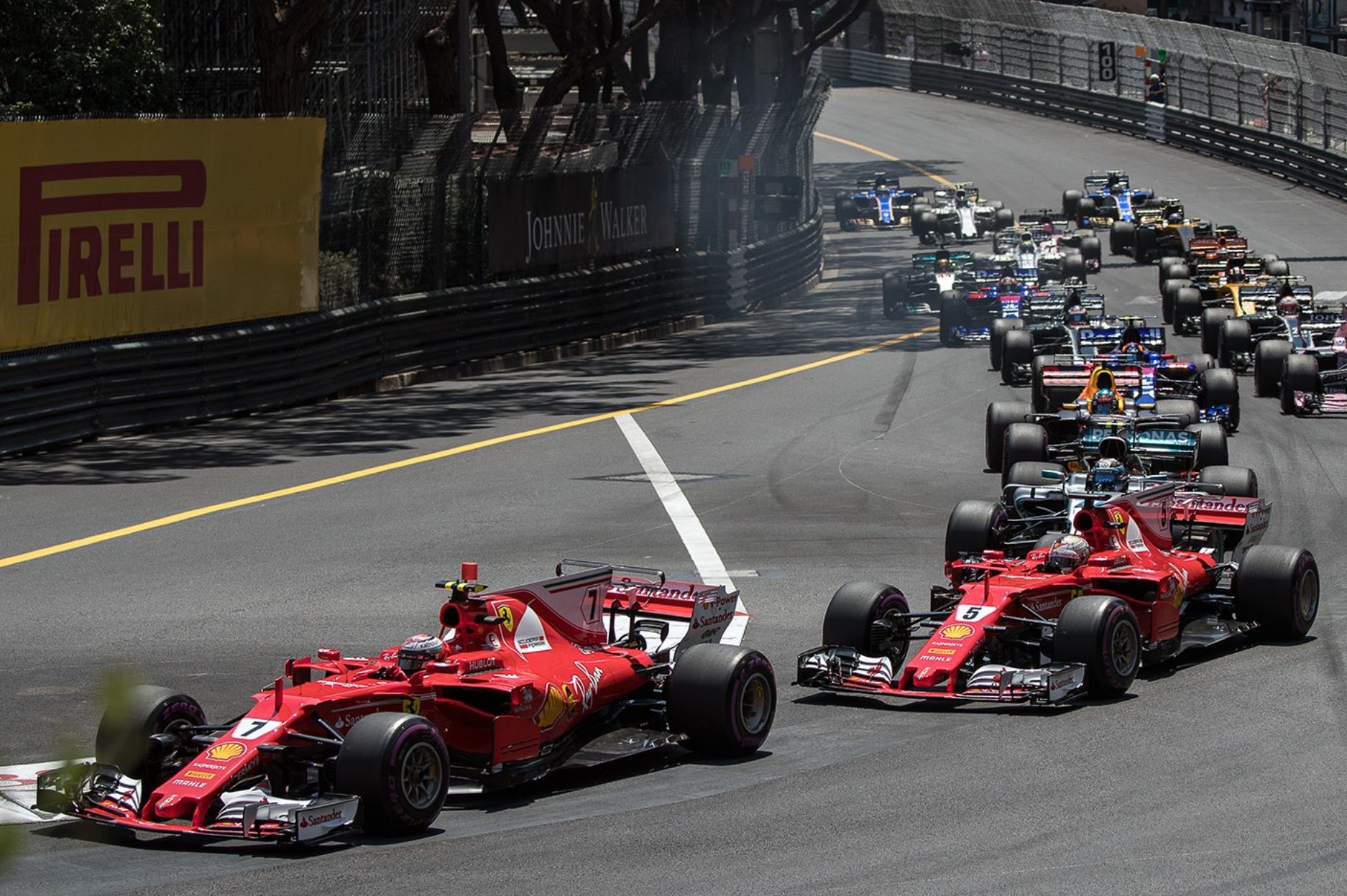
The pundits wagered that Ferrari short wheelbase SF70H would better Mercedes’ W08 over one lap as well as longer stints due to its nimbleness, excellent traction and greater downforce. While Mercedes had a win in Russia for Valtteri Bottas and in Spain for Lewis Hamilton, using their new shovel-shaped front diffuser, Monaco’s lower speeds and short straights nullified the additional downforce produced by that device. It would be a battle of which team could make its front tires stick and stop its rear tires from losing traction out of the slower corners.
Red Bull was full of enthusiasm for its new B-spec chassis modifications before Barcelona but came away knowing that their updates would need to go a lot further if they hoped to fight with Ferrari, not to mention Mercedes. Red Bull had confirmed Adrian Newey’s full return to the F1 team to pull together the “design committee” and get it immediately focused on specific improvements.
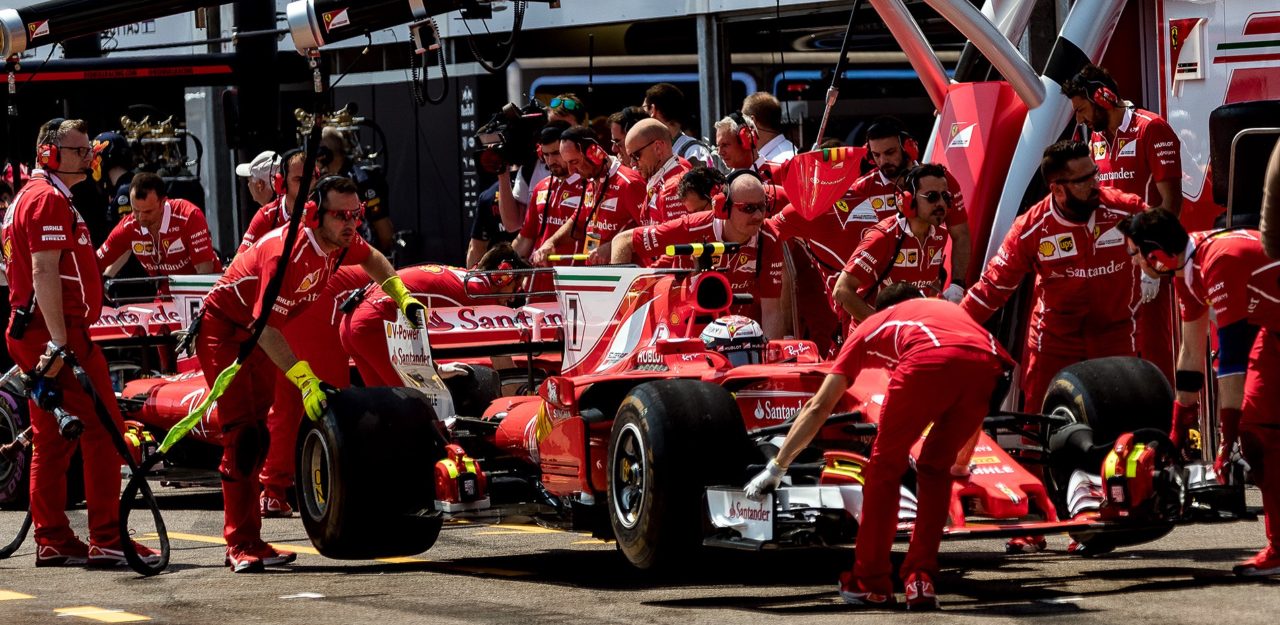
Red Bull’s next series of changes and the set-ups for Ferrari and Mercedes must take into consideration the unusually soft and greasy Monaco tarmac. The racing surface is used by daily traffic, even in the evenings during race weekends and this season 50% of that surface was replaced with much lower grip asphalt than what the teams have experienced in the past. With 19 turns over 3.77 kilometers all bordered by guardrails, and barely three lanes wide, there is no room for error. With no long straights, engine grunt is not as important as grip, and that grip must be massive and consistent.
With lower grip, degradation is a non-factor. It is the downforce produced to keep the tires pressed into the pavement that decides ultimate lap times. Monaco is a race that loves soft, durable compounds. Pirelli brought their three softest tyres, the yellow-marked soft, the red-marked supersoft and the purple-marked ultrasoft. That durability means that the Monaco pit stop “window” is very broad. While only planning one-stop, teams still have a variety of strategies.
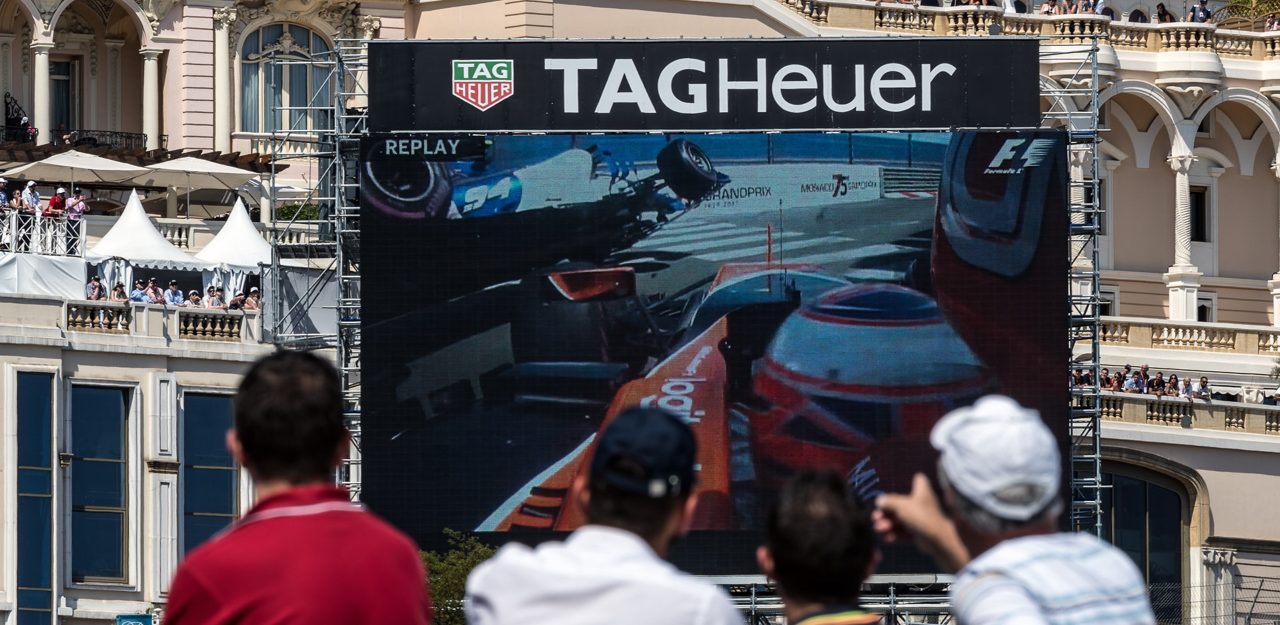
Vettel’s had front brake dramas in FP2 but came back strong with a 1:12.720; the fastest time ever around the streets of Monaco to that point, smashing Lewis Hamilton’s best lap from FP1 by 0.7s on the ultra-soft tyres.
In Q2, it was Raikkonen’ turn to reveal Ferrari’s ultimate advantage, posting a scintillating 1:12.231. Meanwhile, Hamilton had no grip, with understeer and snap oversteer through the entire lap; in shock, he would go no further – qualifying 14th.
Vettel’s had front brake dramas in FP2 but came back strong with a 1:12.720.
Raikkonen had even more for Q3; his of 1m12.178s was pure magic, giving him his first pole since the French GP at Magny-Cours in 2008. Vettel was just .043 behind. Amazingly, Hamilton’s Mercedes teammate Bottas found grip and slotted in third, just .002 behind Vettel. The downforce nature of the track was confirmed with downforce-mavens Red Bull, Toro Rosso and Force India taking the next four spots.
Since 2003, taking the Monaco pole has been paramount; 11 winners started from the front row. This time, it would be the same story with a slightly different plot.
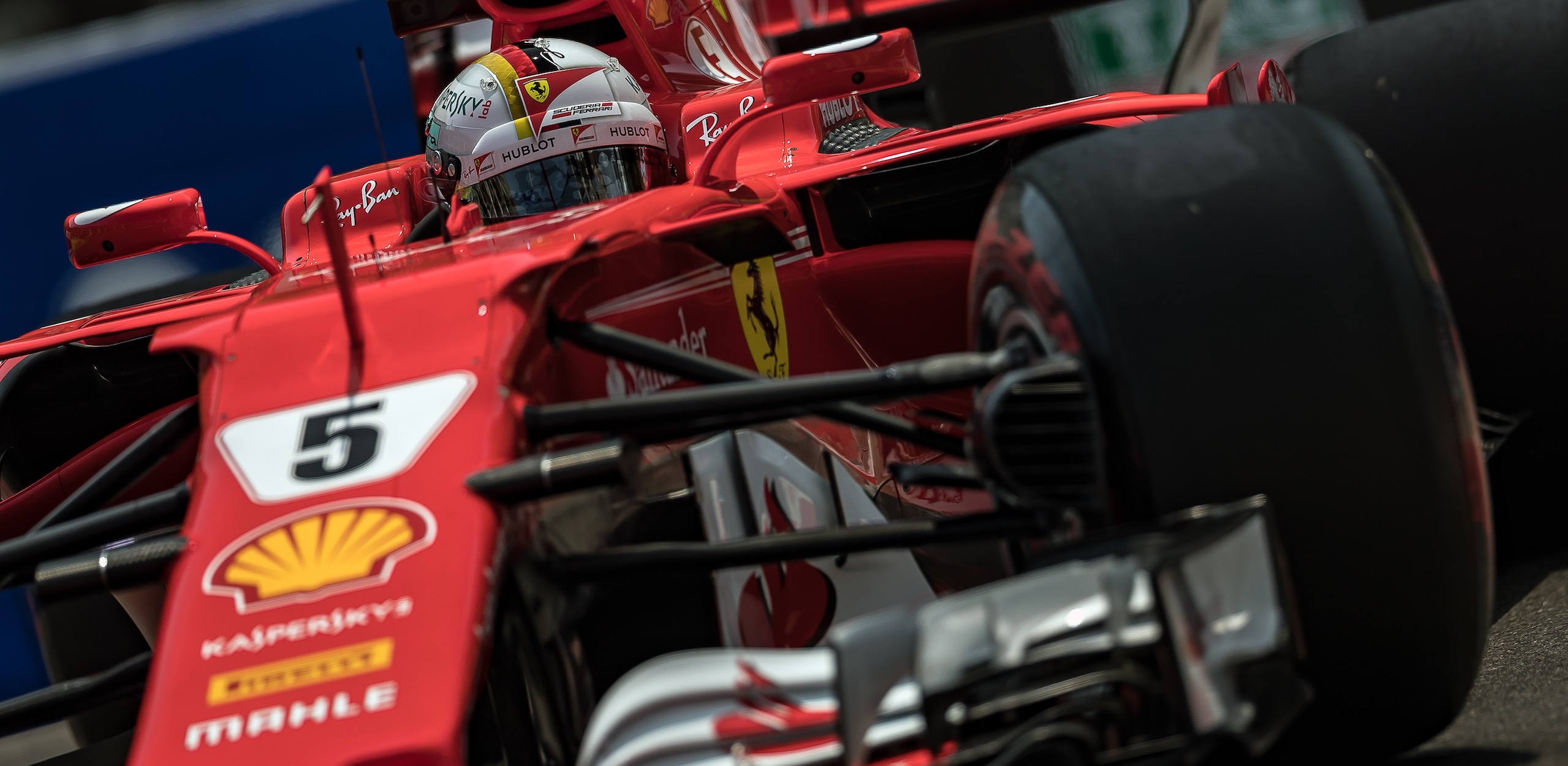
Raikkonen made a perfect start and beat Vettel into Sainte Devote. Bottas held third with Max Verstappen jumping ahead of Red Bull teammate Daniel Ricciardo. The Ferrari duo then simply checked out, pulling immediately away from Bottas, who was already holding up Verstappen. It seemed Bottas was already looking to baby his front tyre lest his Mercedes’ full fuel load weight cause them to slide and die.
Vettel was called in on Lap 39, he had built enough of a time gap to rejoin ahead of Raikkonen.
It stayed this way until Lap 8 when Bottas felt his grip coming in; he immediately began matching Raikkonen’s faster laps. Raikkonen established a steady gap of 2.1-seconds, but by Lap 34, Vettel had closed to within a second and Raikkonen was ordered to make a tire stop. Vettel began reeling off a steady run of fastest laps ahead of his stop, at one point getting down to a 1:15.6. As a result, when he was called in on Lap 39, he had built enough of a time gap to rejoin ahead of Raikkonen.
The Finn was unable to close the gap with his five laps older tyres. Max Verstappen found his situation similar as he had pitted first, with teammate Ricciardo responding ala Vettel with fast laps to jump ahead on the track.
During the race, the change of order was effected solely by pitstops as there wasn’t a single on-track pass for position.
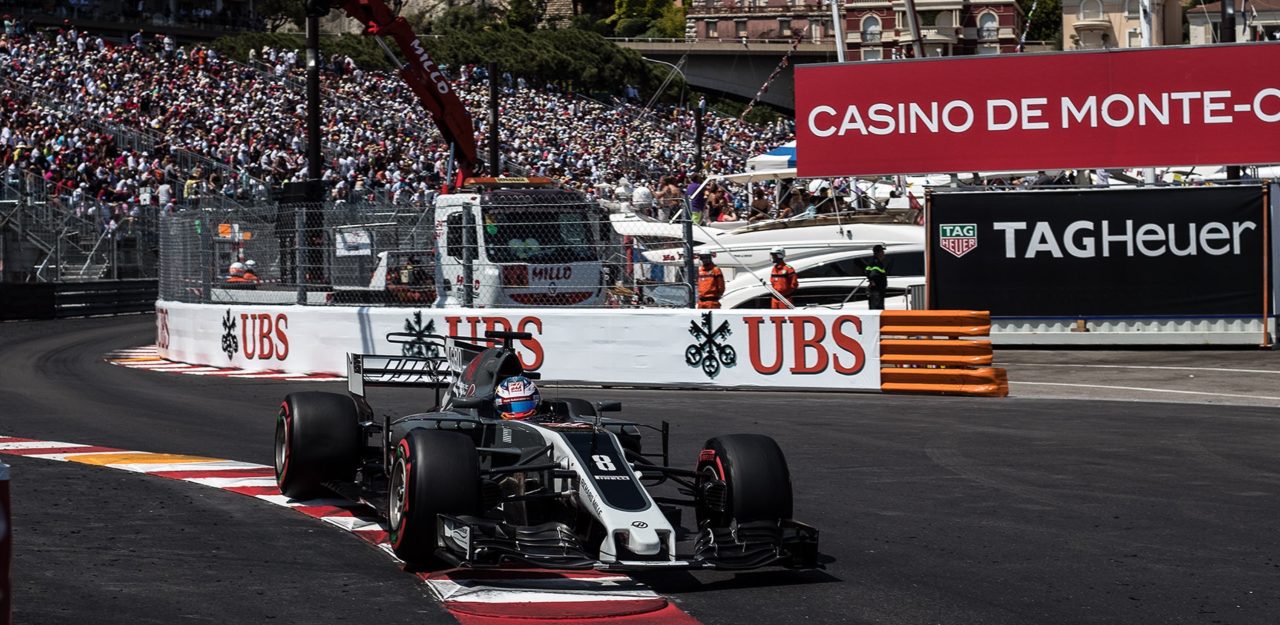
After running nose-to-tale with Pascal Wehrlein’s Sauber for the entire race, McLaren’s Jenson Button, sub-ing for Fernando Alonso’s successful Indy 500 run, went for a pass just before the tunnel. Wehrlein didn’t see Button stick his nosecone inside just before the turn-in and the contact sent Wehrlein’s Sauber head-first vertically into the barriers. It brought out the Safety Car. Wehrlein walked away unhurt.
Following Vettel, Raikkonen and Ricciardo to the line were Bottas, Verstappen, Carlos Sainz and the very fortunate Lewis Hamilton, up from 14th, followed by Romain Grosjean, Felipe Massa and Kevin Magnussen.
It’s still second place but it doesn’t feel awfully good… It’s one of those days where you wish you’d led a bit more.
—Kimi Raikkonen
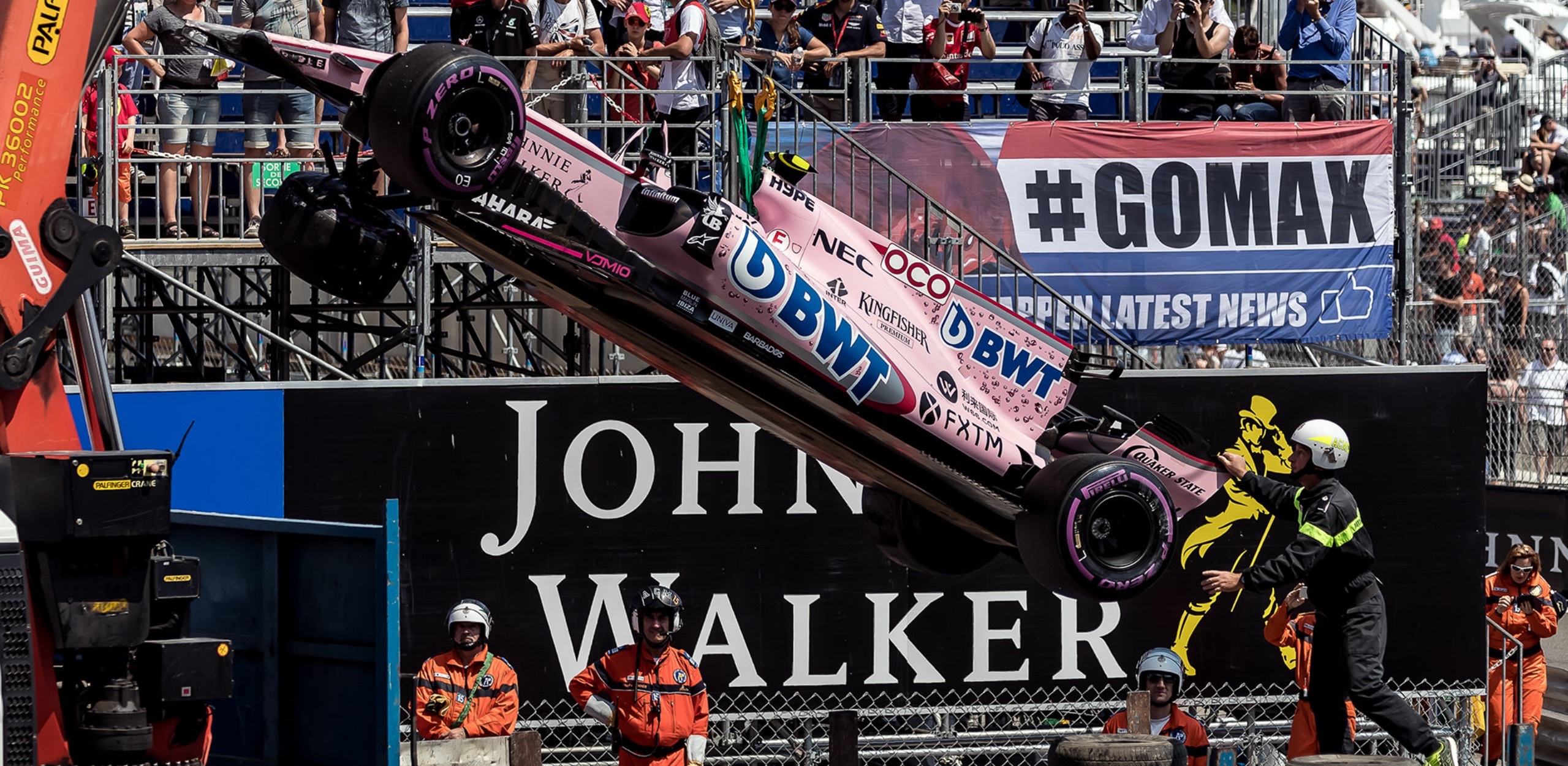
Look for Ferrari’s short-wheelbase SF70H to be equally tough in Canada, the Hungaroring, Singapore, Austin, Mexico City and Brazil.
While Jenson Button was sitting in for Fernando Alonso, he received a 15-place penalty for another Honda engine change. Despite qualifying 10th, he was relegated to the back of the grid. Meanwhile, Alonso qualified 5th at Indianapolis and led 27 laps. He was set for a shootout for victory over the final laps when his Honda engine exploded 21-laps from the end. There’s a common thread here somewhere…
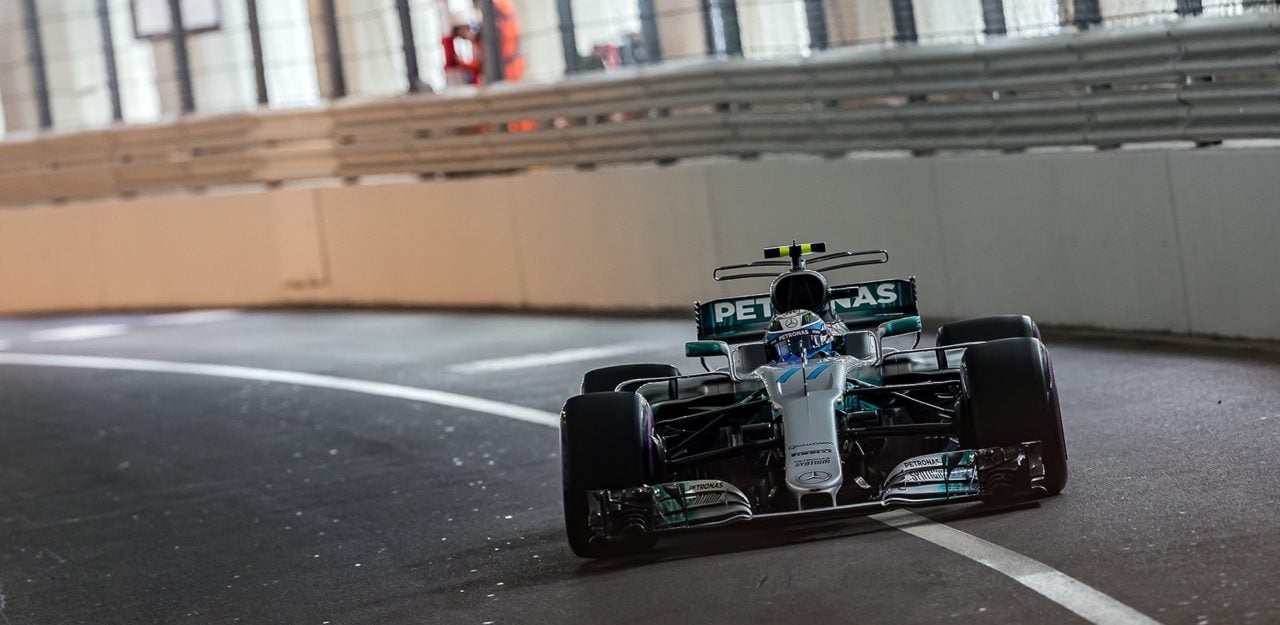
Why did Lewis Hamilton failure to reach Q3? Monaco’s low abrasion surface and this year’s harder compound tyres demand that the front and rear tyre temperatures reach the correct operating window at the same time. Overheat or underheat the “body” of the tyre, and you risk overheating the “surface” of the tyre. Mercedes has struggled this year with front end grip and a loose rear. Their “shovel” front diffuser was a move to push the tyres into the pavement to avoid sliding them. However, the shovel wouldn’t work as well on the low-speed straights and corners. Match those pre-sets with Hamilton’s specific warm up and handling preferences (compared to Bottas), and Monaco’s short lap didn’t allow Hamilton’s Mercedes setup to bring his tires up to the critical temperature at the same moment. That would show itself in understeer to snap oversteer, as each end lost grip, found grip and then slid when they didn’t find the right temperature-couple.
Kimi Raikkonen is 37-years old, a former World Champion and a “character” that’s seen his day pass or a genuine F1 hero, depending on who you ask. What is certain is that he pulled out some of his former magic to set Monaco’s all-time qualifying time to take pole and pushed Sebastian Vettel to dig deep with all he had to beat him.
The US Haas team finally got two points finishes on an unforgiving track. Kudos awarded to Romain Grosjean and Kevin Magnussen.
Now its on to Canada, June 9—11. See you there.
